No Garbage Growing: 7 Ways Gardeners Can Avoid Plastic & Waste
Growing your own produce and flowers saves plastic packaging and other waste, but gardening can create heaps of plastic waste in the form of pots, plastic bags and bottled pest control. Here’s how to go plastic free when cultivating flowers for the bees and farming your own food.
Our food system creates waste every step of the way and florists are pretty unsustainable. Creating a garden of your own - whether its a small section of your balcony, a kitchen garden on a windowsill, a little permaculture patch in a suburban plot, or rows and rows all around a farmstead - allows us to reduce the waste associated with our food, from its food miles to the plastic wrapped around it in various ways along the way, and similarly, with flowers, as we’ve got our own homegrown right there.
Community gardens spread and enable us to share this waste reduction, create increased interest in gardening, and make communities more resilient by being able to supply their own food if necessary. Being able to grow your own food is an important skill for individuals and community to have.
I’m not saying we all need to grow all our food, but it makes a lot of sense and reduces a good amount of waste if we grow some of it ourselves, especially foods with plastic heavy packaging that are sold in excess quantity like herbs, spring onion, and strawberries, which are all easy enough for us to farm ourselves.
It also reminds us that it is not always easy to grow food and flowers and makes us more appreciate of it and them, resulting in us wasting less food and appreciating our farmers more.
It is, however, also not always easy to avoid plastic packaging and other waste when setting up and keeping a garden going. How can we grow without creating garbage? We share a few ways we avoid some plastic and reduce some of the waste created when gardening.
1. DIY Paper Seedling Pots & Seed Envelopes


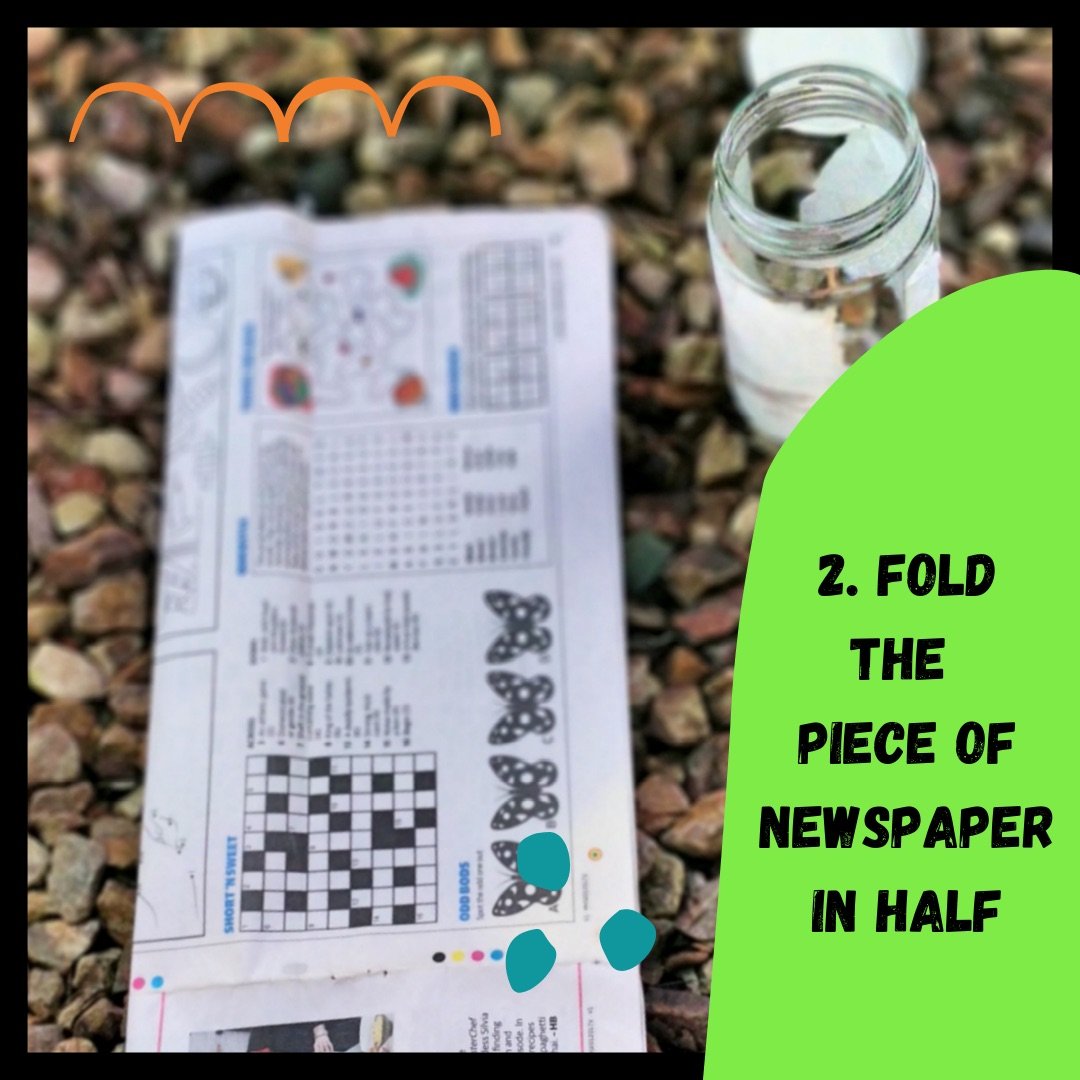
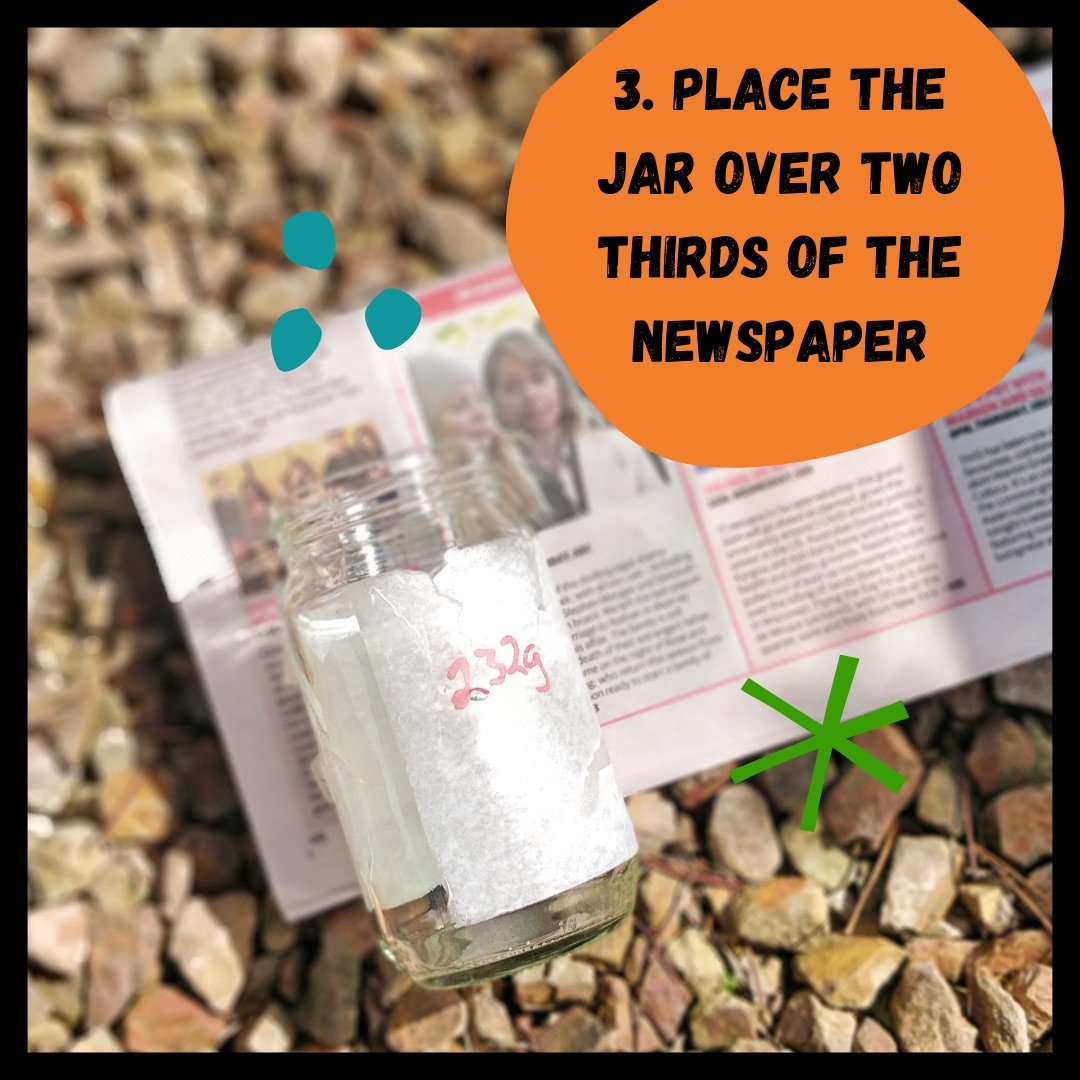
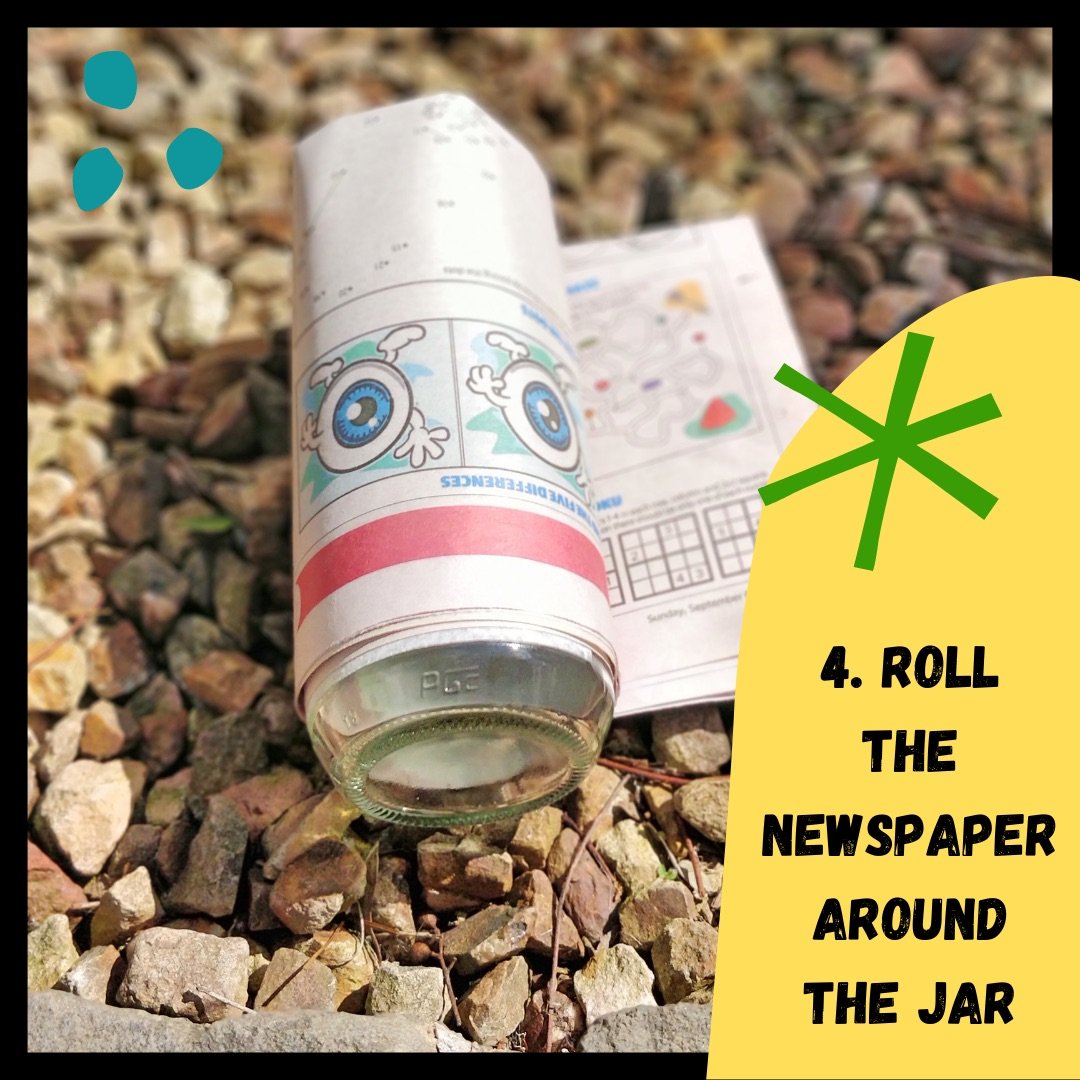
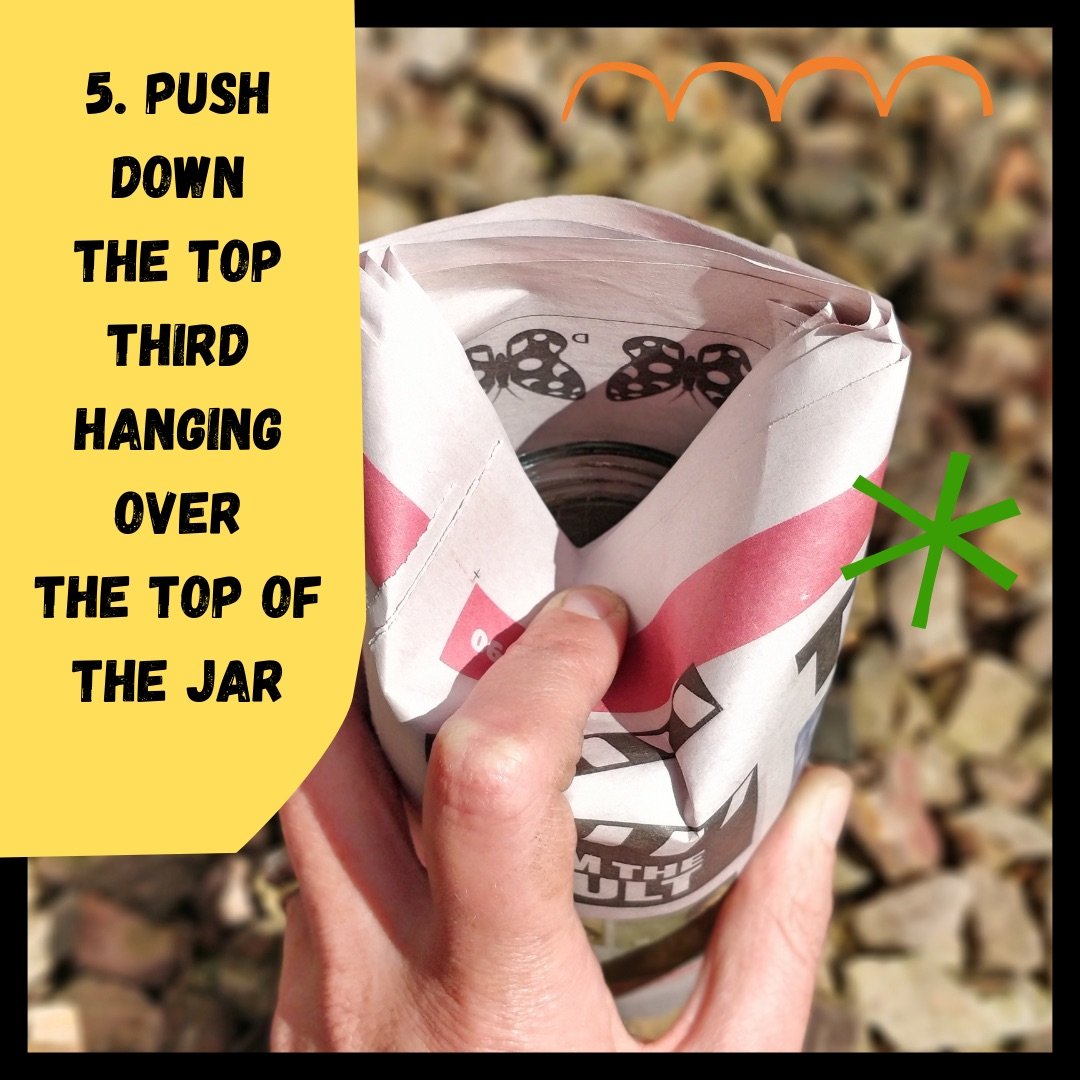

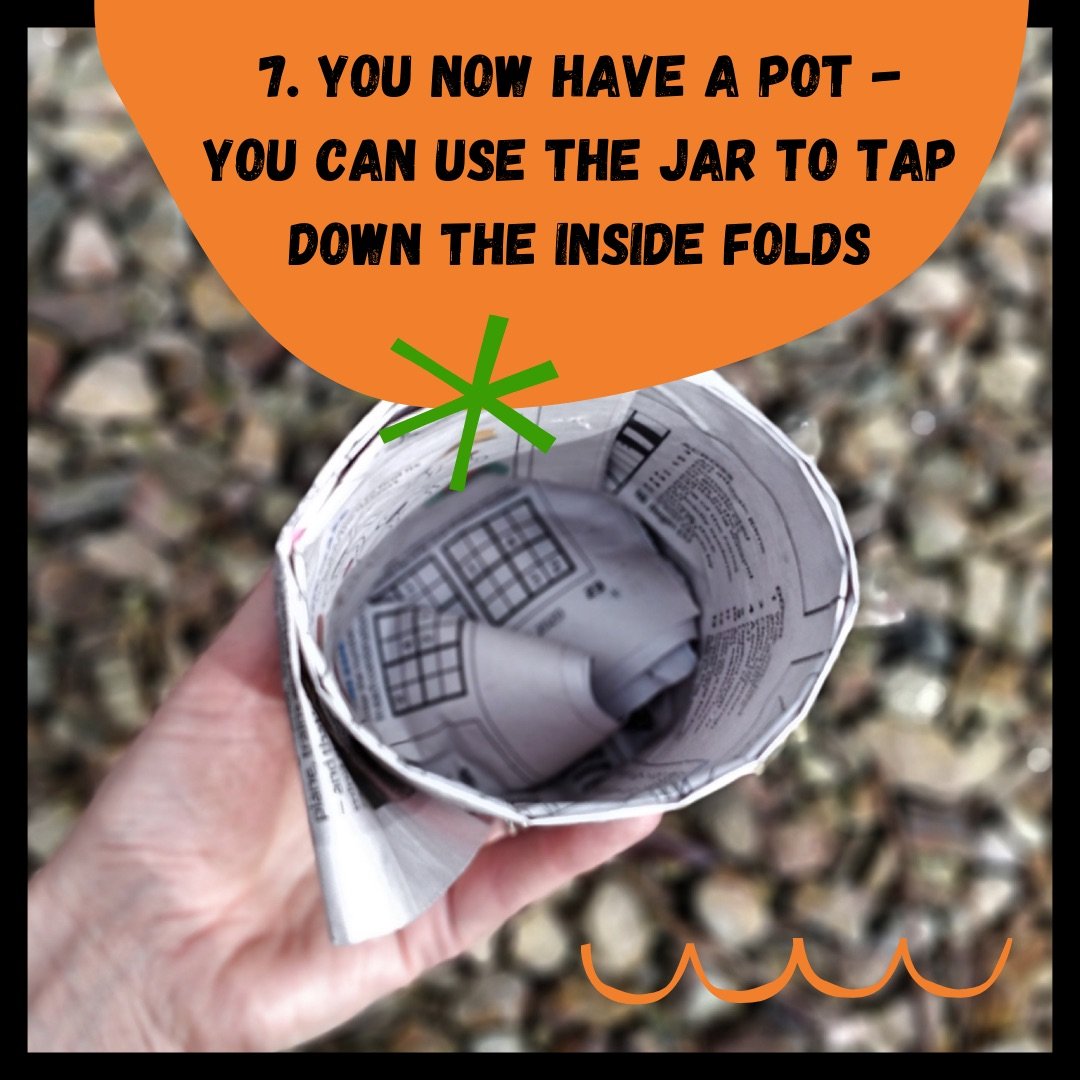
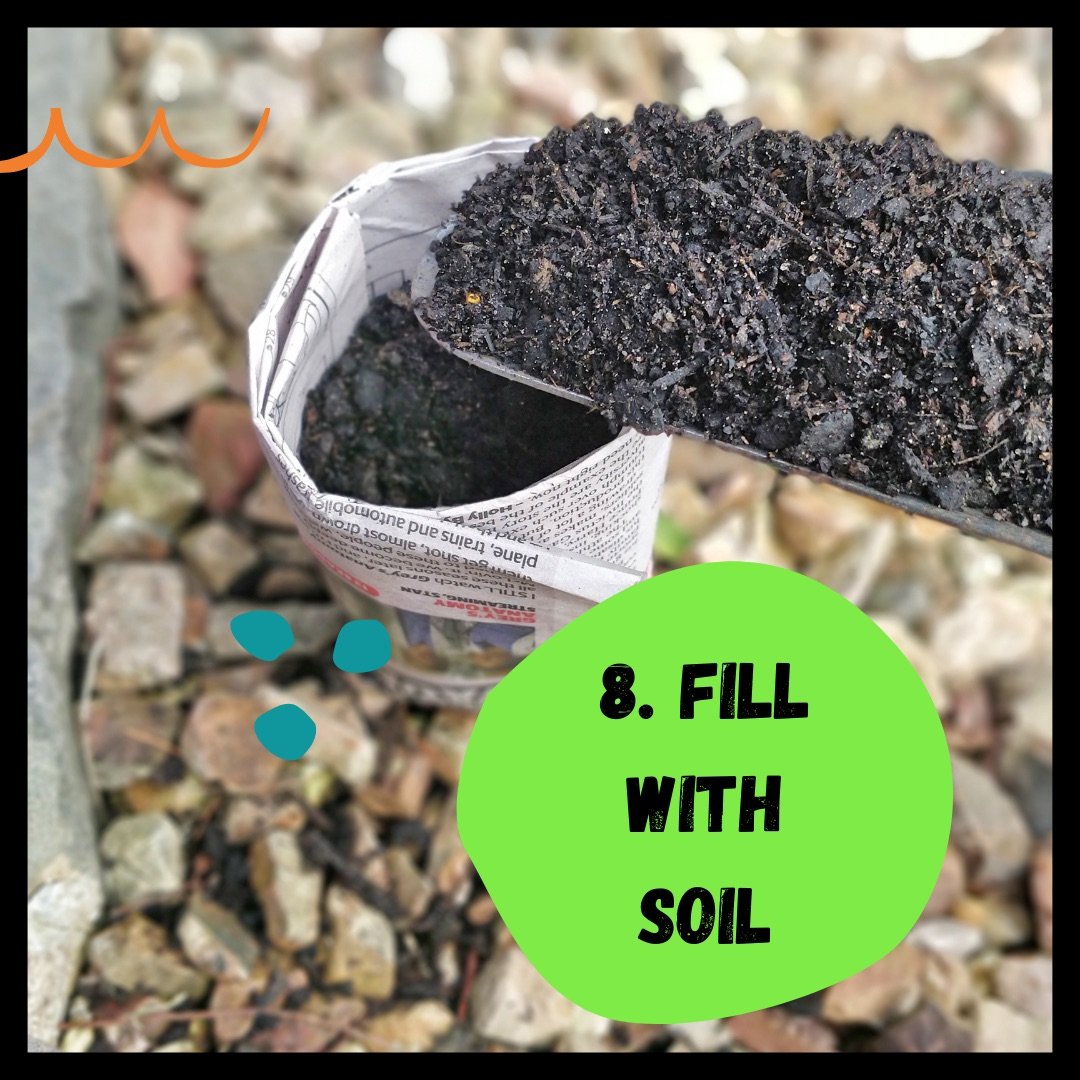
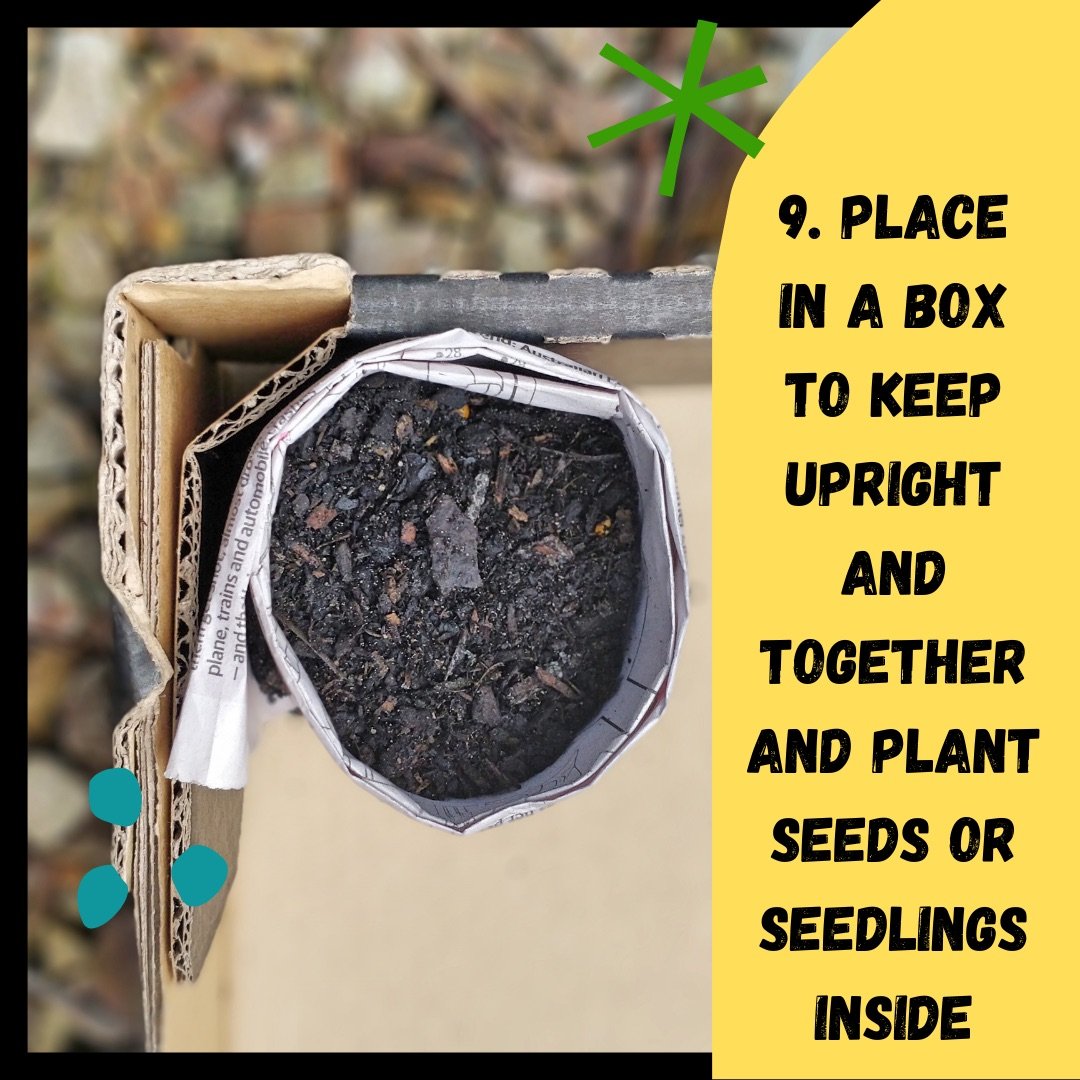
Grow seeds and seedlings in paper pots instead of purchasing plastic pots for this purpose. All you need is newspaper (not magazine pages or waxed papers) and fingers to fold it, as well as a suitable object to use to mould it.
If you really want to, you can buy a wooden paper pot maker, but it really isn’t necessary cause you can just use a cup or glass jar or anything you have on hand that is the right size and shape. Follow these step-by-step instructions and you’ll have a paper pot in no time:
You can plant the seedlings straight into the ground still in the newspaper pot as it’ll just biodegrade. This saves them from the shock of replanting.
For a reusable alternative, this ceramic self-watering seedling starter (US) is a beautiful plastic-free option.
Similarly, seed envelopes can be easily made from newspaper or any scrap paper you have - no need for little plastic lock bags for saving them and sharing them in. Learn how to fold a seed envelope here.
2. Make Your Own Self-Watering Planters
I experimented with making my own planters when I only had a small balcony to grow on and found a simple coffee sack and milk crate planter and self-watering planters made from two buckets and some fabric scraps worked really well for small-scale growing of plants that don’t need heaps of space to grow, for example I’ve used them to grow tomatoes, zucchinis, capsicums, amaranth, mint, rosemary, potatoes, nasturtiums, spring onion, and strawberries.
For the milk crate and coffee sack planter, you can ask your local coffee shop if they have any coffee sacks you can have, or look on FB marketplace, which is also a good place to look for milk crates, which can also often be found in hard rubbish (do not take the ones that cafes have left out to be returned and reused!). I got the coffee sacks I used from a second hand shop near my old neighbourhood that gives them away for free (Pennie Pinchers Op Shop in Preston).
I learnt how to make the self-watering buckets from someone in my community who opened their urban backyard food garden for visitors to see. I found food grade buckets on FB marketplace. You can also ask local restaurants or bulk food stores for used buckets to reuse.
Here’s how I made both types of DIY planters:
If you have a spare reusable shopping bag laying around or one you are happy to use as a planter for a while, you can use it grow potatoes in! Here’s how to grow potatoes in a reusable shopping bag.
For something a bit bigger that will be able to grow more and grow vegetables that need more space like pumpkins, you can make zero-waste upcycled self-watering planters out of barrels, as well as other things. There are a lot of ways to do this and a lot of videos showing the different ways to do it, so find one that matches the second-hand materials you have or have access to. An excellent example and easy option is the barrel. Joost Bakker shows how he made them for his Future Food System zero waste home here.
3. Find Gardening Tools & Pots in Hard Rubbish & Second Hand at Op Shops
The majority of my gardening tools, trellises and plant pots have been found in hard rubbish and a lot of the rest have been sourced through Buy Nothing pages and other community groups or bought second hand.
Lots of things branded as rubbish can be reinvented as a planter, big (wheelless wheelbarrows) or small (cracked teapots), or trellis to help hold up heavy plants and fruit. Keep an eye out and keep your mind open!
What I haven’t be able to obtain this way, I have tried to buy from small local nurseries and have tried to buy products from small local businesses and producers.
You can use plastic seedling pots over and over again, so reuse the ones you already have and ask others if you can reuse theirs if they aren’t going to use them again. And if you have ones you wont use again, don’t throw them away; give them away.
Where you can’t find or would prefer not to use a second-hand option, why not support a local artist by getting gorgeous and fun plastic-free planters from them to plant a plant in for something or someone special, such as these (AU) recycled designer pop-up pots, these (US) made from coconut fibre, or metal, cement or fabric planters (various worldwide).
Another option is to use woven baskets as pot plant covers to hide reused/rescued plastic pots.
If previous herb-growing attempts have failed, try again or maybe invest in one of these excellent kitchen herb gardens for foolproof and stylish windowsill gardening that’ll make sure you always have fresh healthy herbs or microgreens on hand when cooking:
UrbanGreens microherbs windowsill grow kit (AU)
Chef'n microgreen grower (South Africa)
Self-watering vertical garden (South Africa)
Microgarden hydroponic smart garden (South Africa)
And you can buy good quality plastic-free gardening tools from small businesses that’ll work great and last ages if you prefer or if the hard rubbish gods are not favouring you, for example:
made to last stainless steel and beech gardening knife (AU) made by a family-run business
stylish, space-saving brass windowsill watering can (US)
handmade kitchen garden shears with wood handles (US)
copper metal finish and wooden gardening tool set (US/CA)
stainless steel and beechwood children’s gardening tools (US/CA)
4. Make Your Own Compost, Seaweed Fertiliser, Mulch & Even Soil
Most soil, compost, fertiliser and mulch bought from a nursery comes in a big plastic bag. These bags can be Redcycled, but reduce them when and where you can.
Composting your food scraps at home in a compost bin results in a free, readily available soil improver and bulker, and feeding them to worms provides a steady supply of fertiliser in the form of worm castings and worm wee.
Options include using a bokashi bin (AU here / UK here / US here / South Africa here / other countries here), a composter, or a worm farm (AU here / other countries here / an incredibly stylish kitchen countertop biomorphic worm house here). Learn more about these different options and which one will be best for you in our Composting 101: What You Can Compost & The Best Options For Small Spaces blog post.
If you have access to seaweed, you can make your own seaweed fertiliser from foraged seaweed. Read how in this Instagram post:
If you need a large amount, you can try to find somewhere that sells soil or mulch in bulk and fill up a trailer to take home (some councils have piles of free mulch you can go and collect mulch from in your own container), or you can also make both of these yourself at home. You can use dried leaf litter for mulch. It is best to shred dried leaves before using them as mulch. You can do this with a lawn mower.
Making our own potting mix is beyond our expertise, so we’ll pass you over to @compostable.kate, who’s an expert in all things soil:
For those in the US, DEN Sustainable Soils sells sustainable potting mix and soil (US) made from ingredients sourced within 500 miles of its Bay Area office in compostable SFI-certified kraft paper bag packaging, which is a great alternative to buying in plastic bags.
5. Dealing With Plant Pests in Other, Plastic-Free Ways
Prevention is the best way to have no pests! Plants growing in the wrong conditions become weakened and are vulnerable to pests and diseases. Grow them in the right conditions and check companion planting charts to make sure you’re not planting incompatible vegetables together. If some plants are grown near each other, this can also increase the chance of pests and disease.
Sacrifice plants are extra plants that you are happy to sacrifice to pests to save other plants. A garden is an ecosystem so what we see as pests are often just insects living their lifecycle. The goal is not to eradicate all insects, but to control excessive numbers and reduce the damage done to our plants and vegetables. Thus, we can tempt them away from what we want to eat by providing something else they’d rather eat, for instance nettle and nasturtiums.
And, pest repellent plants exude substances that repel pests or suppress diseases and protect neighbouring plants, for example horseradish and lemon/citronella scented pelargonium.
Make sure your garden has a healthy ecosystem of bugs, spiders, birds and other insects. Predator insects like lady bugs, lizards and birds will feed on pests and naturally keep their population under control. Lady bugs love aphids and will happily help you remove them from your food plants!
Attract beneficial insects and pollinators as part of this healthy ecosystem and so that your vegetables get pollinated by planting a range of flowers loved by bees, butterflies, and birds, and putting up a bee hotel, which you can make yourself or buy a locally handmade bee hotel, and other pollinator attractors and things that keep them happy like:
a butterfly puddler (US)
a hummingbird feeder (US)
a bee drinking garden ball (US)
a butterfly house (US/CA)
a ladybird insect tower (UK)
a hedgehog barn (UK)
You can hand-pick off small infestations, for example snails (feed to chickens or ducks), or simply spray off with water, for example aphids. It really helps to stay on top of and to get on top of potential outbreaks quickly so make sure you’re inspecting your plants daily for pests or signs of pests.
You can make natural concoctions to spray plants with. Homemade remedies I have used that have worked for me are:
Aphids: water + a few drops of dish soap - spray and reapply every 2 days for 2 weeks
Powdery mildew option 1: 1 tbsp baking soda + 1 gallon water solution - soak leaves for 3 days
Powdery mildew option 2: 3 tsp baking soda + 2 tsp washing up liquid (optional) + 1 tsp vegetable oil + 500ml water (strong) - spray on in evening
You can put up barriers like netting (make sure it is wildlife safe) and fencing to protect the food you’re growing, and can use cloches, which can be made from upcycled plastic drink containers (if you don’t have any, look out for any littered ones or ask your neighbours for some) to cover seedlings. You can also make homemade traps, for example a beer trap, which captures slugs (fill a tub that is flush with the soil with stale beer) to reduce pest populations.
Try these low waste, natural interventions first before using stronger chemical interventions.
6. Reuse Something For Your Plant Markers
There’s no need to buy new markers from virgin material to label your seedlings and plants. There are so many things you can reuse instead for this purpose, reuse wooden cutlery, use your bamboo toothbrush’s handle when you replace it with a new one, or cut up and use compostable takeaway containers you acquire.
Look around your home, look in your recycling, look in your neighbour’s recycling and use whatever you have that’ll work for the job. These can be reused and painted and rewritten if needed. Get creative and crafty!
7. Save Seeds & Swap or Share Excess Seedlings & Produce
If you have a bumper crop and have grown more than you can eat yourself, have successfully raised loads of seedlings, or have excess seeds lying around, gift them to friends and family, share them with your neighbours and community, or swap them at a food swap so they don’t go to waste.
This will also inspire others to get gardening and improve their self-sufficiency, as well as that of the whole community and keep the circle of growing and sharing going. Then, share this article with them so they do it in a low waste way.
You can also inspire others to get gardening, especially children, by gifting them:
a seed saving kit like this (US)
grow your own cocktail herbs, edible flowers, herbs for a certain cuisine, or herbal tea kits like these or these (UK)
grow your own strawberry popcorn kits (South Africa here) or
simply a packet of seeds (buy online AU here / South Africa here / UK here / worldwide here)
Learning to save seeds will enable you to keep growing every year without relying on bought seeds and will ensure you have many seeds to share. There are excellent seed saving books and manuals (AU) (UK here) out there on the subject, or keep an eye out for a local workshop on this.
I’ll end with a few other zero waste options for gardeners:
Clean your hands thoroughly after gardening with gardener’s soap (AU here / UK here) and a wooden nail brush (AU here / UK here)
Fairtrade rubber gardening gloves (UK)
Learn more about gardening and get inspired to transform your patch into a food forest with these gardening books (AU) or these gardening books (UK), and know when and where to plant with a planting calendar and companion planting poster (worldwide)
Don’t waste houseplants by killing them when you go away on holiday! Going away and don’t want to come back to dead plants? These terracotta plant sitter watering stakes will water them while you’re away.
How do you avoid plastic and waste and reuse in your garden? Let us know in the comments!
*this post contains a few affiliate links. If you buy something using one of these links we may earn a small amount. To learn more, see our disclosure policy. We maintain this site in our free time and support in any way, shape or form means a lot and helps us keep it running, whether it is using an affiliate link when investing in something, sharing our content, or buying us a coffee on Ko-fi.



